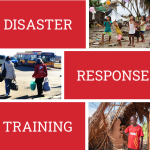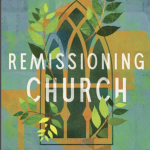
A Bihari Muslim (courtesy Gerald Roberts, at Joshua Project.net)
Regarding unreached peoples and unreached people group thinking
A BackPage Editorial by Doug Lucas
My take on all this people group thinking is that it’s largely a mobilization tool. I tell people… imagine you’re trying to recruit volunteers to water the trees and plants in the mulched beds at Emerald Hills. We could describe the ones close to the building that get lots of water (if we had water sprinklers, that is). And we would say to the volunteers, “The problem is, there are many trees too far from the building, too far from the sprinkler system. These are the trees for which we really need volunteers.” Now… having said that… when the volunteers come, we’re still going to hop in the golf cart, drive them past a batch of mulched beds, and even get out of the golf cart to feel the mulch. Once we’ve felt the mulch, we can make a final decision about which flower beds we’d like them to water. But talking about the concept of beds *close* to the sprinkler system and beds far away is a useful tool to help prospective volunteers understand why they’re needed. Otherwise, the automatic sprinkler system would take care of all the watering.
Likewise, in partnership with a mega-church here in Louisville, we recently used people group research tools in the process of mobilizing them to pray and launch toward a new outreach project. After tons of prayer and research, they chose a group in Asia. I lined up a few researchers to talk to us prior to going — but the truth is, not even *I* had been to this particular land. When we arrived, the people group was all but M.I.A. But the general area was filled with people groups that hadn’t heard. Thankfully, I had talked a lot with them about “not freezing in until they did the site visit.” (By the way, that’s the concept we would advocate for all these Restoration Revolution UPG-type projects.) We ended up moving several hours to the Northeast in the country we had chosen. The district has 12 million people … and, to everybody’s knowledge, about 8 missionary-types in the whole region. Most folks agree there are way less than 300 believers… probably only around 50 known believers. They’re all Muslim.
Does the church regret the power of people group thinking? Not a bit. It was a mobilization tool — and it needed verification on-site. Upon returning, we sent our findings to Joshua Project and they were ever-so-thankful for the error-correcting research. That’s the only way, in my opinion, that we’ll ever improve on their list of 6800 groups: When all of us work together to set them straight.
Regarding whether or not urban areas un-do the concept of people group thinking:
I guess, to me, it’s a bit like saying, “If there exists any situation that doesn’t fit the model, then the model is bad.” I trust we all agree that that logic is bogus. A model is just that — a model. It *always* breaks down somewhere. Missiologists have been talking about the breakdown of people group theory in urban contexts since 1987, as far as I recall. It’s absolutely nothing new. That’s why we have practically always suggested that adopting entities say “people groups or cities.” In October, I’m scheduled to participate in the 3rd Lausanne congress (in Cape Town). The track I’ll be attending is the Unreached Peoples Track. Lausanne has called together 4000 people from over 200 countries. There are 10 key concepts that will be discussed, all 10 of which are the most critical and most relevant themes in modern missions. These concepts have been carefully conceived and represent literally two years of preparation prior to including them in Lausanne. They wouldn’t be including unreached peoples as a major component if they thought the concept was dead or irrelevant or useless.
Now one could call all of this “managerial missiology” if one would prefer. But to me, the point is to get at least some of the folks out, away from the building, where there are no sprinkler heads. Then and only then will we start understanding the need to carry the water in buckets in the back of the Gator. Or we’ll buy more water hose. Or pray for rain. To me, when we advocate the demise of unreached people group thinking, we might be risking the demise of any sense of prioritization. We live in a big world. For example, there are about 68 cities with a population of 3 million or more. How in the world do we decide which city to focus on? One could argue that it doesn’t help to look at unreached people group thinking in those cities. But I think one would be wrong. Look up unreached peoples in Chile. (Go to www.joshuaproject.net … specifically to this page…
http://joshuaproject.net/countries.php
and set the drop down box in the upper right on Chile.
The two “unreached groups” are measured in the hundreds or so. Some jews, some Turks, and that’s it. That should tell us something about Santiago. There are 17 million people in Chile. *Many* of those 17 million are non-Christian. But *most* of those 17 million have the capacity to meet a Christian today. That tells us something about Santiago. Now set the country to Bangladesh. There are 372 groups considered unreached/least reached. The majority of those have zero percent Christian, zero percent evangelical, zero percent adherent. The population of these unreached groups represent *millions* of people. *tens* of millions. These folks are way out, away from the sprinkler heads. We need some very proactive folks to get involved in reaching these people. Most of these millions have no capacity whatsoever to know or even meet a Christian today. That’s the power of using unreached people thinking.
It’s not unlike Nehemiah 3, where we get the sense that Nehemiah had assigned certain parts of the wall-rebuilding to certain families. We note that many of the most important “public” sections (like the Fish Gate or such-and-such a fountain) were embraced by particular clans. Only when those clans accepted responsibility for that public area would it be truly repaired effectively. Why? Because nobody lived there, building their house as a lean-to against those walls. So — those walls were “unreached” walls; someone had to accept responsibility for them.
Does any of that make sense?
What’s your response?











It can be pretty tough to get an accurate take on how dynamic societies stratify themselves without getting up close and talking to lots of people – especially if you’re trying to do this on a global level. I’ve been part of dozens of on-the-ground ethnographic research projects that start with the assumption that we =don’t= know who the unreached are. We go into a city, stick around for a while, and do a couple hundred of interviews. Researchers explore social stratification by looking at the level of sameness, who people identify with and accept as being “people like us.” Sometimes the most important factors are urban/rural, or wrapped up in levels of education, wealth, or modernization; sometimes they are ethnolinguistic. Ethnography teams also look at social structure and how the communities are changing. Process is summed up in the book “Exploring the Land.” If anyone is interested in learning the topics and techniques, I can recommend several people who teach this stuff.
Looks like the ISFM (society for frontier missiology) is exploring similar questions at their annual meeting later in Charlotte, NC this month. Theme ” Reassessing the Frontiers: Ethnicity, Globalization and the Kingdom of God.” Looks like a pretty good lineup of teachers and topics, too. See http://www.ijfm.org/isfm/
It is important to understand the difference between ‘reached’ and ‘unreached.’ In my understanding, when the church in a people-group have the resources to reach their own people, they are considered reached. The next problem is deciding how to divide populations into people groups. Are these ethnic groups only? I prefer ethnic groups over other divisions, such as ‘taxi drivers in the capital city.’ If the missions community agreed on the meaning of ‘reached’ and ‘people groups’ I believe that the concepts remain very relevant to those organizations that are concerned with reaching the remaining unreached peoples. But we must recognize that not every agency has this focus, and rightly so. For instance, those training church leaders, teaching literacy, or a host of other ministries will have a much wider focus. For those of us who have a specific calling on our lives to Reach the Unreached Now (RUN) we have to accept the fact that our target is always moving. As people groups become ‘reached’ (using the definition above), our focus changes to groups who are ‘unreached.’ Eventually, we hope to classify the entire world as ‘reached’ and then we will join the host of other organizations who are supporting national churches around the world.
I agree that the people group paradigm has been a helpful mobilization tool. However, it is more than that. It also helps in setting strategy, focusing prayer, and evaluating progress. Moreover, several biblical references cause us to wonder if God himself sees the world through a people group construct. People group thinking has power and continues to be relevant!
“People group thinking”? … “mobilization tool”? … “paradigm”? … “managerial missiology”? … Back 40 vegetation at Emerald Hills? Think God looks at it like that? What is in His heart? What does He want reclaimed from Satan? What surrounds His throne (Rev 7:9)? Hey, whether the “numbers” types and the “mercy ministry” types like it or not, we KNOW those multitudes are already in place. We DON’T know about all those ethnic groups. Missions, logically, should be done on that basis. This whole reaching the unreached groups thing is not some fad-like and passing 101 Missions class concept … it speaks to what our Lord’s church is to be doing — getting real about what can only be seen as His last highest priority. Don’t trash or trivialize ANYTHING that can in ANY way aid us in doing what has to be done — done so that we KNOW it is done — and eternity comes that much closer to beginning.
Good input Marti. Heart of the matter stuff. Greg, thanks, too, for jumping in. Roland, your input helps me: Realizing that not every ministry feels called to “reach the unreached now” helps me level my reaction some. I think, in this item, I was mainly struggling to “react” to the discussion I mentioned in the original item. (See
https://brigada.org/2010/06/27_5038 if you missed it.) Danny, believe me, just to confirm we’re on the same page here — I wasn’t at all trying to trivialize or trash people group thinking. Rather, I was trying to put into words a kind of “apologetic” for ongoing pursuit of turning stats on “unreached” into stats on “reached.” So Danny, it sounds like we’re in agreement, although maybe I didn’t say it well enough up front. The point is — I still maintain that unreached people group thinking has its proper place at the top of our priorities for getting the gospel out to the world.
Thanks for the input. Others?
(Watch for a summary of these items to be included in my blog over at the Lausanne site, once we’ve fine-tuned this topic.)
Real quick I want to jump in here with an observation. The notion of “unreached peoples” as has been hammered out by the frontier mission movement (not the popular use of the term) still has huge relevance for the church at large and all mission sending structures. When Winter first started articulating this he used the term “hidden peoples”. He saw vast implications from what McGavran was saying about cultural differences and evangelism. McGavran saw the need for “bridge people” but did not see the implication if you don’t have such a person…that those without near-neighbor witness are sealed off from the Gospel, even if living geographically proximate to Christians. They are hidden from view because we “see” people like ourselves. Unless there is a cross-cultural effort where people from the outside take the Gospel to root it in this segment without the Gospel, they will not hear. Check out the first part of this essay http://www.ijfm.org/PDFs_IJFM/20_3_PDFs/Perspectives.pdf
Also in the IJFM archives I did some work on assessing the frontier mission movement looking at core contributions as well as weakness that appears in 18:2 and 18:3 in 2001
So while the concept can be used for mobilization, etc. it is a key missiological insight and the power behind the E an P diagrams (see http://www.ijfm.org/PDFs_IJFM/19_4_PDFs/winter_koch_task.pdf) needs to continue to be taken seriously my mission agencies for development of strategy.
Awesome, Alan. Thanks for the response.